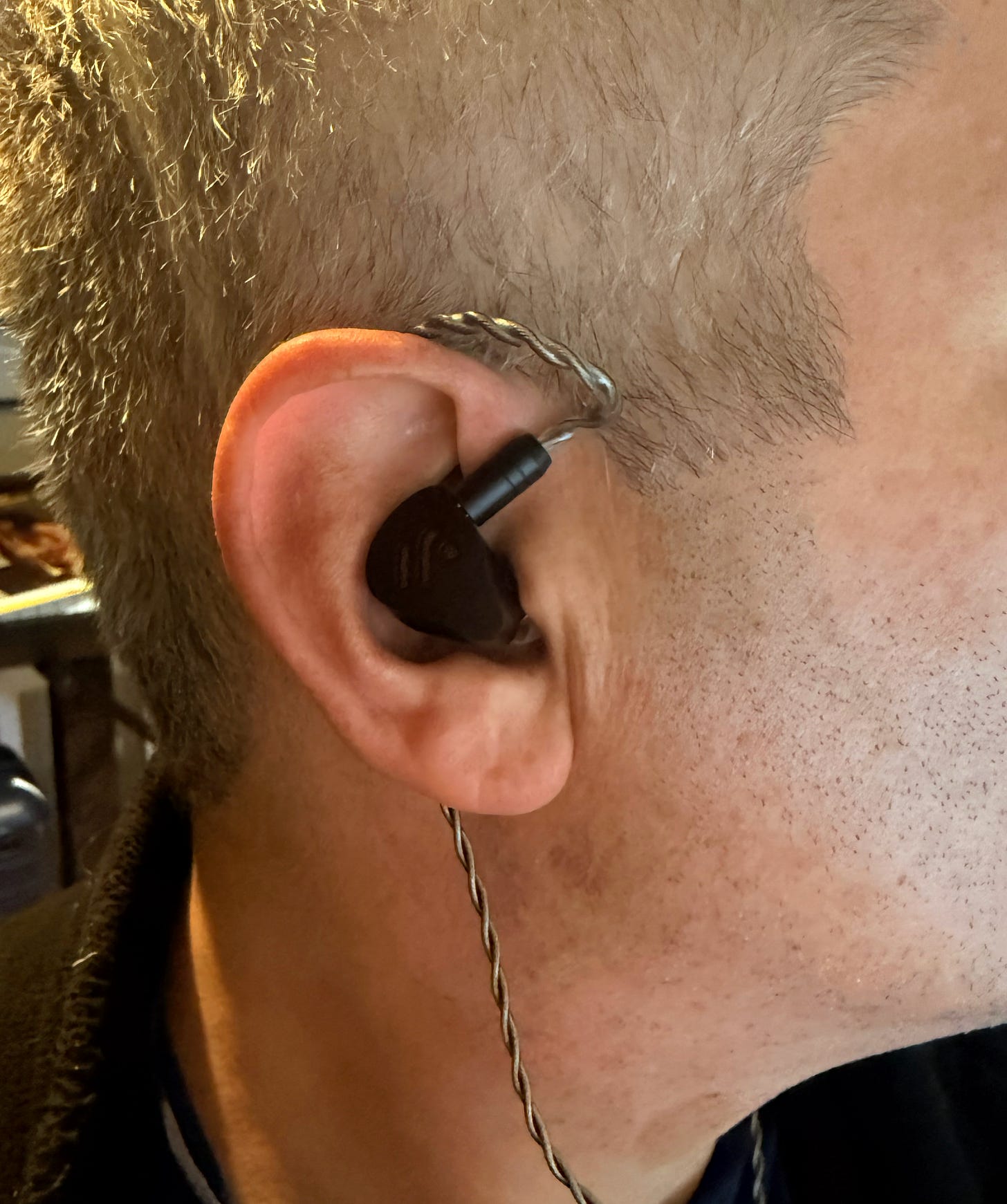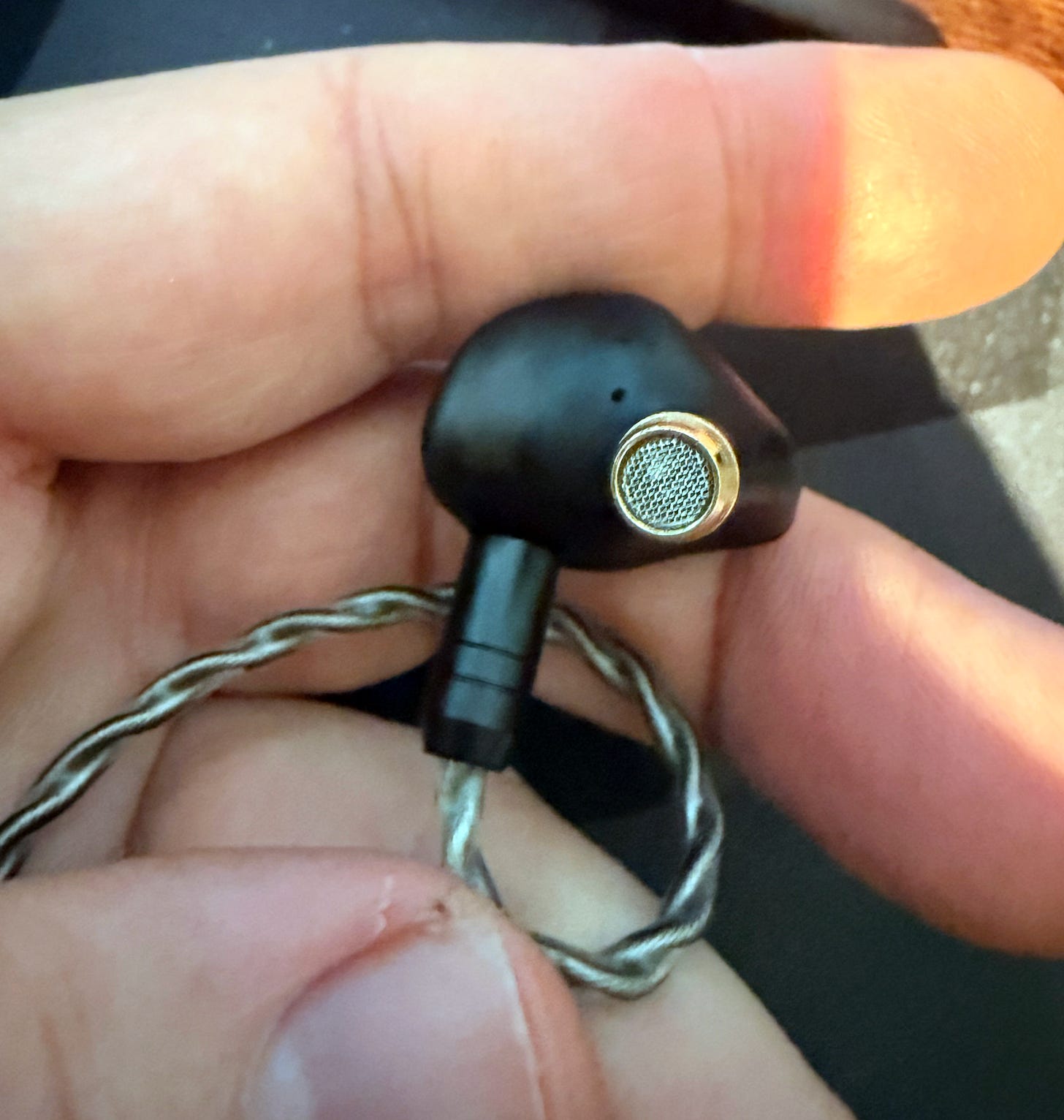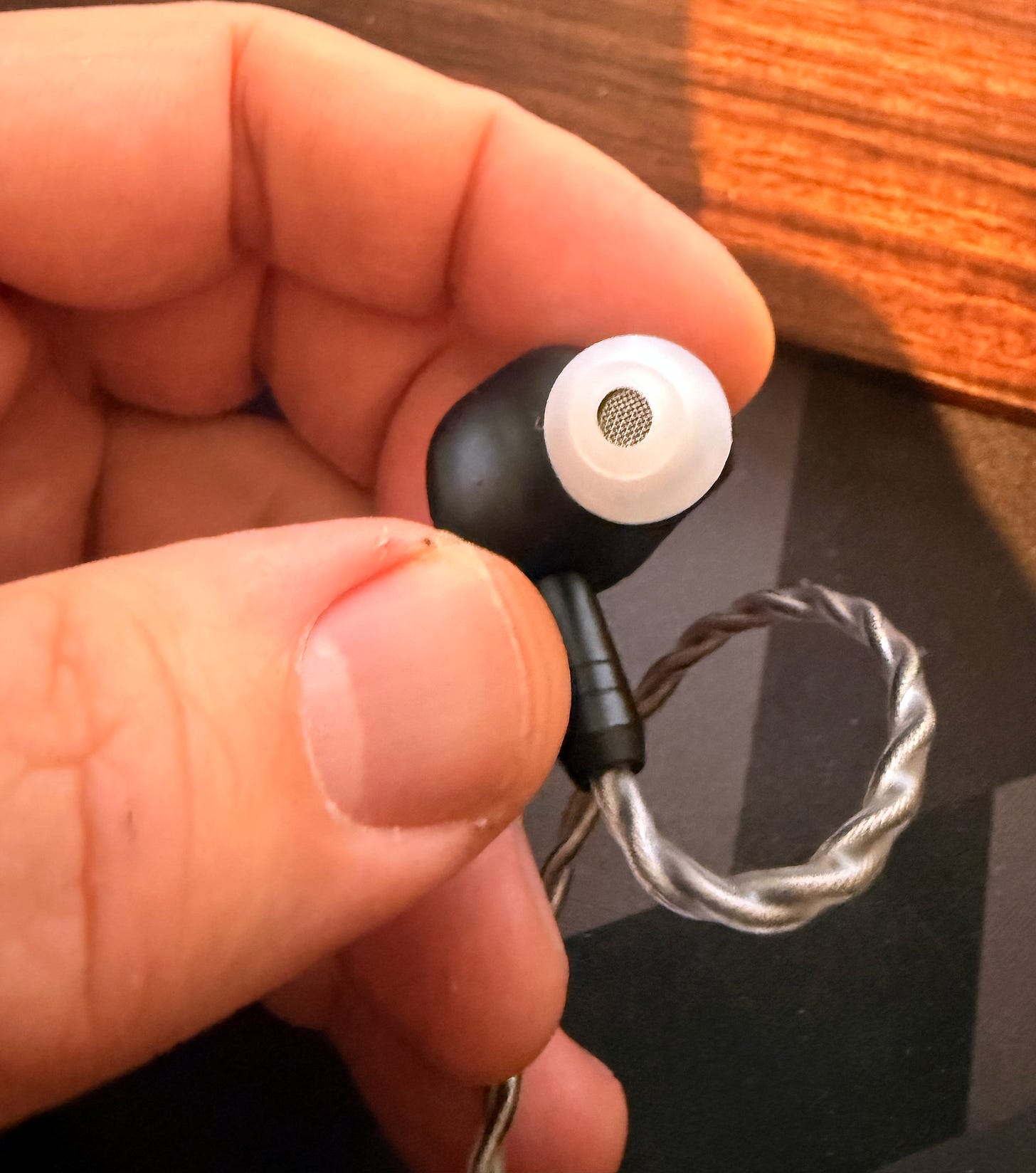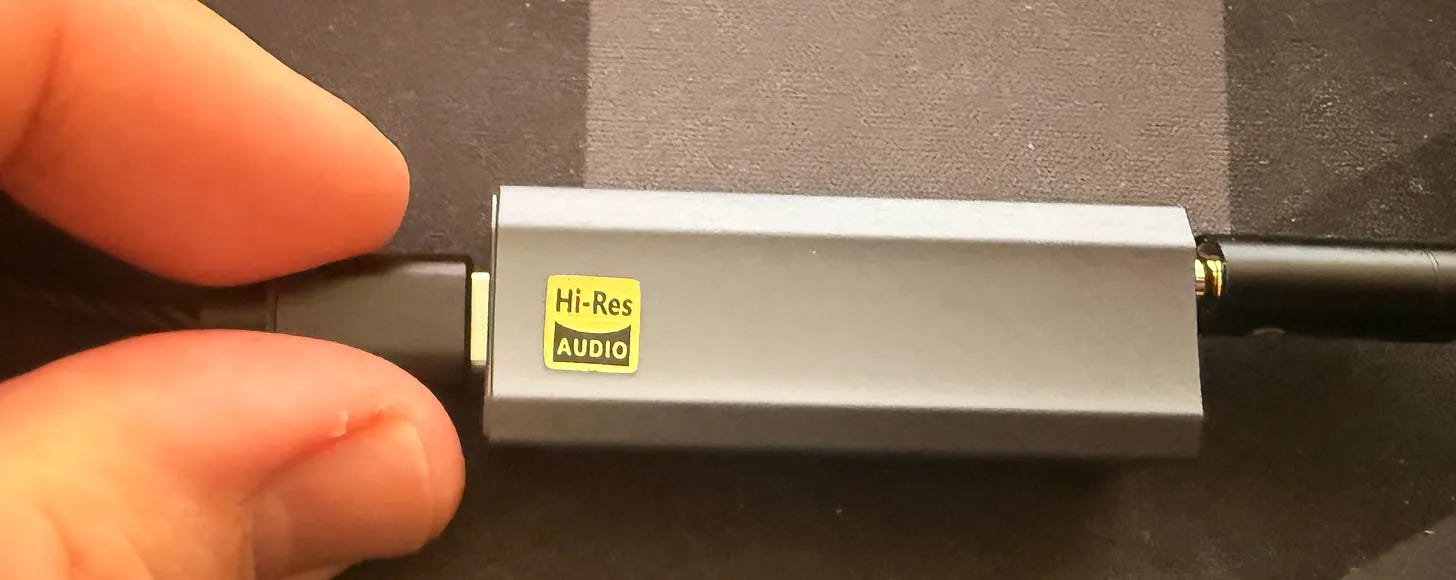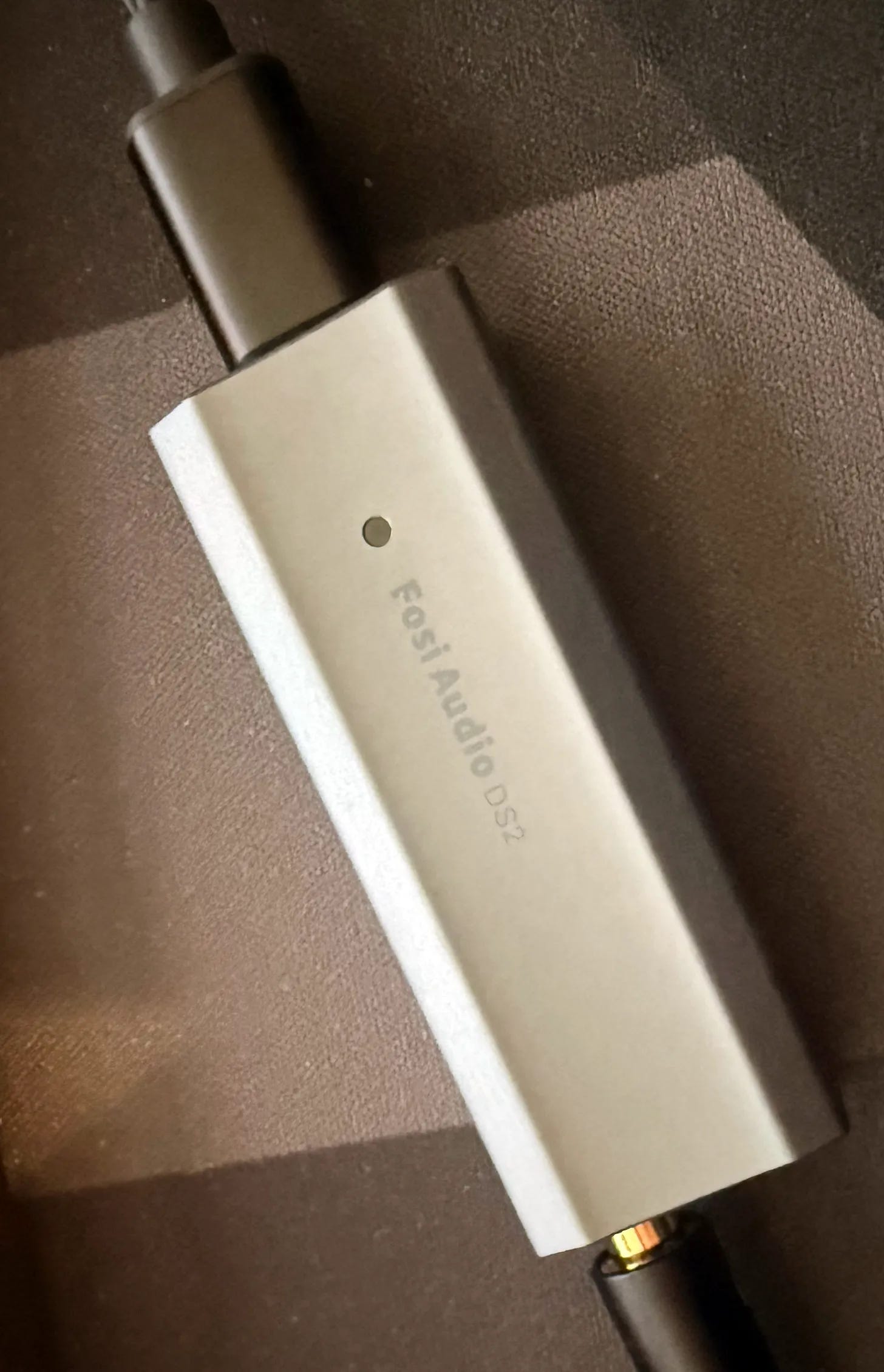Tired of robot calls and sore ears, I tried the Fosi IM4 and got my music back
A great way to experience audiophile quality on a budget.
I’ve been out of the personal audio space for a bit simply because I thought I found the right mix between comfort and quality. My daily drivers, my AirPods Pro, however, have become problematic. When folks call me, I sound like a robot, which is cool for scam calls but not so great for doctors and probation officers. Further, my Sony WH-1000XM6s are nice for a plane but tend to hurt my head after hour four. So it was time to explore.
Fosi Audio always looked like an interesting if small audio company. Popular outside of the US, they are best known for their low-cost amplifiers and digital audio converters, devices designed to amplify and improve audio streams that were probably dicey in the first place. This week, however, I tried their new $99 IM4 in-ear monitors, a pair of metal earbuds that fit to your ear and feature an open-back design for more air and space. I tested these alongside Fosi’s headphone DAC and amp, the DS2. The current IM4 can be bought alone or with the DS3, which I didn’t test.
First, a bit about these kinds of monitors. They are designed to really get in your ear. The first folks to make these really well were Ultimate Ears, a company that literally molded their headphones to your ear. These guys sit deep and cancel noise by simply filling up your ear canal. I used to wear in-ear monitors religiously during my misspent youth, and if you begin wearing them, I recommend keeping your volume low to avoid hearing damage. They’re so close and tight that you’ll hear plenty without resorting to blasting the music.
The IM4 is their first attempt at an in-ear monitor. On paper, it looks a bit too good for a hundred dollars, so I went in with some doubt. The buds feature open-back shells in aluminum, a beryllium-coated dynamic driver, brass and metal tuning nozzles, and nine sets of tips — one set for flat, one set for “bass,” and another set for “deep bass.” The tips are harder as you go up the bass scale, and there was a definite difference between flat and deep. It’s a pretty impressive package for entry-level audiophiles, and, as I said before, I hadn’t heard much from Fosi in years, so I was trepidatious. The good news is that most of it holds up in daily use, and the weak points are clear and honest rather than hidden.
The shells themselves are the interesting part. Fosi uses CNC aluminum with a matte finish, and there are grills on the faceplate that let air in. This is a true open design, not just a small vent. Each earpiece is light, under seven grams, and the shape is friendly. In my ears, they sit deep and steady without hot spots or sharp edges. They do not stick out, and they do not feel heavy after a few hours. This is the kind of fit you can wear in an office or on stage without thinking about it. I had a bit of trouble with my right ear, but it was nothing that swapping the tips didn’t fix.
Once they’re in, you’re submerged. The noise isolation is definitely great in quiet rooms, and you’re going to be nearly deaf when you’re out and about, meaning these things are probably not great for sports and instead more useful for desk-side listening or even on a plane. I did a white noise test with these, essentially turning up some airplane sounds to full blast, and while I could still notice the noise, it was definitely reduced.
That said, these aren’t true noise-cancelling. Outside noise is cut by about half. You still hear fans, traffic, and people around you. Again, at home, at night, at a desk, they shine. The open-back design is doing real work in the sound, and you pay for that with less isolation.
The stock tips are the weakest part of the package. All are made of stiff silicone. They keep their shape, but they do not feel great after long use. As I said, I could get a medium-sized one into my left ear but needed a smaller one in my right. Sonically, the balanced tips push the upper range a bit too much, the deep bass tips cut too much air, and the bass tips end up closest to the tuning that feels most natural. I would still plan on trying third-party tips if you buy these, and I would definitely suggest trying all three to see what you like.
Inside is a single dynamic driver with a beryllium-coated diaphragm. On paper, the IM4 is 21 ohms with 109 dB sensitivity and a standard twenty hertz to twenty kilohertz range. In practice, they are easy to drive from a phone or dongle, but they do scale with a better source. Paired with Fosi’s DS2 DAC and amp, the sound gains width and a bit of warmth in a pleasant way. It feels like the earphones get room to breathe. I listened to lossless audio on a desktop and iPhone, and both sounded nicely balanced and very detailed, which was definitely refreshing after the AirPods. In short, these things make audio sound natural, not processed, and the DAC adds quite a bit of amplification and clarity. The DS3 and IM4 combo costs $199, but you could safely purchase the DS2s for $59 if you’re on a budget.
Out of the box, the tuning sits in a neutral to warm zone with a small V shape. Sub bass and upper mids are lifted a bit, treble has energy but does not push much. The open-back construction adds air and a sense of space, so music feels around you instead of packed between your ears. You can’t really keep one earbud in and still get the full effect. You need full isolation and both earbuds firmly in place.
Bass is where the IM4 makes its case. Sub bass is slightly raised, with good reach and a gentle rumble that you feel rather than just hear. It is not a basshead set. It is more about texture and control. Notes step in, do their job, then step out. Mid bass has a nice punch without getting woolly. You can follow bass lines and drum hits without them spilling into the midrange. In very bass-heavy electronic tracks, closed monitors with more pressure will still hit harder. For an open-back design at this price, the balance here is impressive.
The changeable nozzles give you real tuning options, not a small gimmick. With the aluminum nozzles, bass has a bit more slam and fun. With the brass nozzles, bass tightens and holds back a little, giving more focus to the midrange and smoothing the overall tone. I kept switching between them depending on whether I was listening to rock and electronic or to jazz and vocals.
The midrange is a strong point. It sounds natural, neither thin nor syrupy. Male and female vocals both sit forward enough to hold your attention. Instruments have proper body. There is no odd plastic tone that sometimes shows up in cheaper sets. With the brass nozzles, mids pick up warmth and a fuller note. Vocals become closer, more intimate, guitars gain meat, and sax or strings feel rich without glare. With the aluminum nozzles, mids lean out, gain extra clarity, and the whole presentation moves a bit toward an analytical style. You lose some warmth, you gain separation and bite. It is nice to have both options in one product.
Treble is bright enough to keep things lively, but it stops short of harsh. There is good extension, so cymbals have tail and air, not just a splash. On poor recordings, the IM4 is still kind. On better material, you hear fine details in percussion and overtones without fatigue. Again, the nozzles matter. Brass gives a bit more sparkle and excitement, which suits rock and electronic music. Aluminum pulls the top end into a calmer, more measured place, better for long sessions or aggressive metal, where extra control helps. Again, the real benefit to this kit is that you can try multiple nozzles and tips and you’re not breaking the bank by investing in one specific pair of headphones and DAC.
Soundstage is wide. That is the first thing you notice after a few tracks. Instruments spread out to the sides, giving the sense of a small open room rather than a studio sealed in your head. Depth is decent, with vocals in front and drums and bass behind. Height is more modest, but the overall image does not feel flat. Separation is good but not reference level. Basically, the soundstage is fairly flat, although it’s far better than your average AirPods. If you’re going to get these, also spring for the mini amplifier and DAC because using Apple’s own little 3.5mm dongle isn’t going to cut it.
Against other single dynamic sets in this price range, the IM4 holds its ground. The IM4 trades some of that edge for comfort, space, and an open back feel. Compared to higher-priced single dynamics like my original Ultimate Ears and similar offerings from Sennheiser, the IM4 gives up some refinement and finish but offers far more value. You get a lot of sound and tuning freedom for under a hundred dollars, which is honestly pretty cool.
Again, the tradeoffs are comfort, isolation, and some clarity. That said, they are a world better than AirPods and definitely better than the stock white wired AirPods folks are listening to now. If you like music and like to hear it, this is definitely a solid choice. These are great for folks who are dipping their toes into high-end audio and definitely work better than similar $99 earbuds and over-ear headphones I’ve tried.
The Fosi Audio IM4 is a strong first step into the in-ear world for this brand. It offers a clear voice, a wide stage, and real tuning flexibility through nozzles and tips. At $99, it is hard to argue with that. For quiet rooms, late nights, and long playlists, the IM4 feels like a delightful and well-made treat for the ears.



